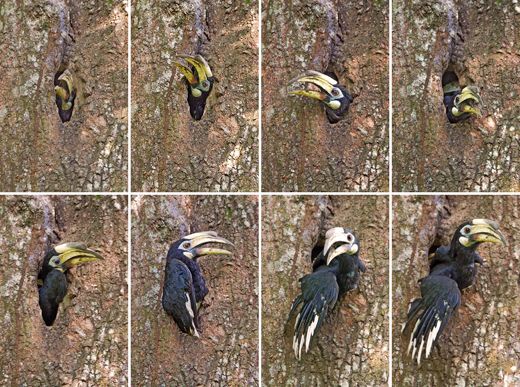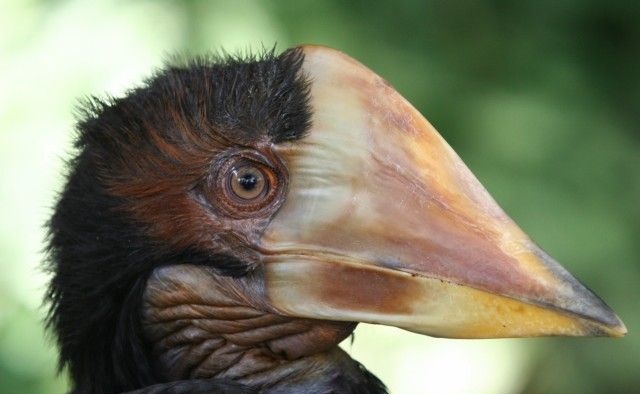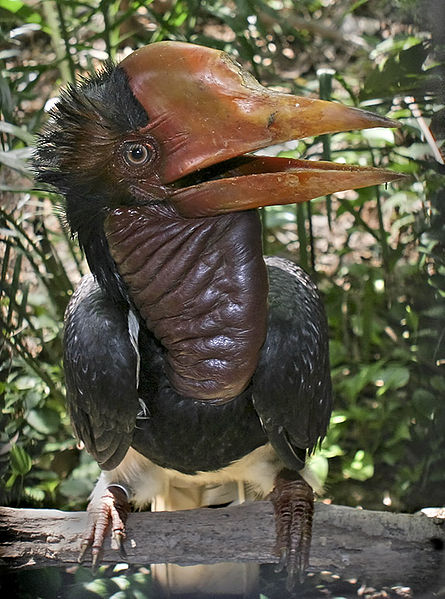Reproduction
The reproduction of hornbill's has been a subject that has just recently been researched extensively. First of all, these birds are monogamous, meaning they share one partner (Kemp 1995). It was know that these birds lay their eggs in high cavities in trees and also that they plaster up the openings with female inside and the male outside. They also tend to lay very few eggs.The male brings food to the female during her period in the cavity (Greij 2010).
Two important steps necessary prior to breeding are courtship and nest-selection. Courtship in the birds involves very close interaction between the male and females of a pair including flying, perching, and feeding together (Kemp 1995). This eventually leads to the nest-selection phase. The nest holes are inspected by the pair with females leading the way and the males following behind. The selection of a nest can eventually lead to nest preperations, which in turn can lead to breeding.
More in depth studies have lead to
many revelations of the breeidng of the Helmeted Hornbill. Now we
will be looking into a specific observed instance of the breeding
behaviors of the Buceros vigil. In this specific instance
the bird was in a hollowed branch of a tree approximately 30m above
the ground. The nest was very scecluded and hidden. The nest was
situated for optimal sun exposure and rain coverage. The seal of the
entrance takes the female approximately 2 weeks. The male provided
fruits to help produce the material necessary to seal the nest.
The ninth day meant the complete confinement of the female. The male continued to bring the female food in the for of regurgatation. 138 days later the chick was first observed. The female stayed in the nest until her chick was fully developed and ready to leave the nest (Chong 2011).
The chicks are tended to by the parents for months (Kemp 1995).
Continue on to learn about the
Buceros vigil's
Interactions
or
Head back to the
homepage
(content 2)

